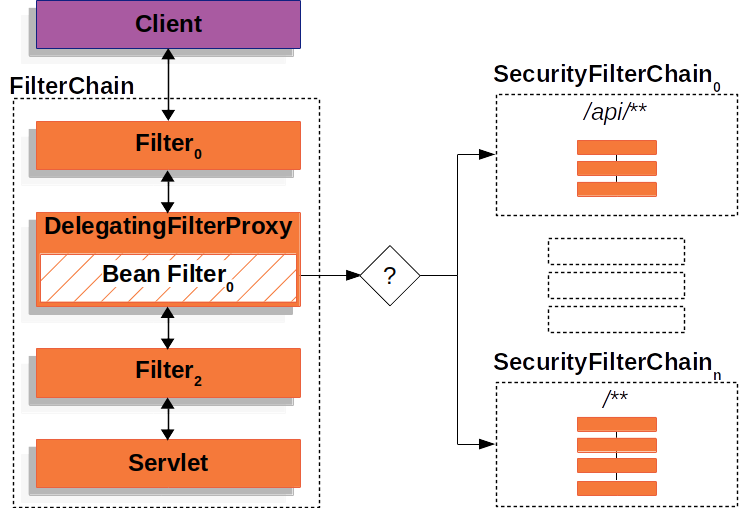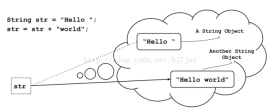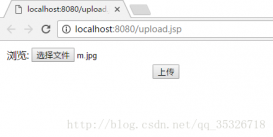背景
在配置中心增加权限功能
- 目前配置中心已经包含了单点登录功能,可以通过统一页面进行登录,登录完会将用户写入用户表
- RBAC的用户、角色、权限表CRUD、授权等都已经完成
- 希望不用用户再次登录,就可以使用SpringSecurity的权限控制
Spring Security
Spring Security最主要的两个功能:认证和授权
| 功能 | 解决的问题 | Spring Security中主要类 |
|---|---|---|
| 认证(Authentication) | 你是谁 | AuthenticationManager |
| 授权(Authorization) | 你可以做什么 | AuthorizationManager |
实现
在这先简单了解一下Spring Security的架构是怎样的,如何可以认证和授权的
过滤器大家应该都了解,这属于Servlet的范畴,Servlet 过滤器可以动态地拦截请求和响应,以变换或使用包含在请求或响应中的信息

DelegatingFilterProxy是一个属于Spring Security的过滤器
通过这个过滤器,Spring Security就可以从Request中获取URL来判断是不是需要认证才能访问,是不是得拥有特定的权限才能访问。
已经有了单点登录页面,Spring Security怎么登录,不登录可以拿到权限吗
Spring Security官方文档-授权架构中这样说,GrantedAuthority(也就是拥有的权限)被AuthenticationManager写入Authentication对象,后而被AuthorizationManager用来做权限认证
The GrantedAuthority objects are inserted into the Authentication object by the AuthenticationManager and are later read by either the AuthorizationManager when making authorization decisions.
为了解决我们的问题,即使我只想用权限认证功能,也得造出一个Authentication,先看下这个对象:
Authentication
Authentication包含三个字段:
- principal,代表用户
- credentials,用户密码
- authorities,拥有的权限
有两个作用:
- AuthenticationManager的入参,仅仅是用来存用户的信息,准备去认证
- AuthenticationManager的出参,已经认证的用户信息,可以从SecurityContext获取
SecurityContext和SecurityContextHolder用来存储Authentication, 通常是用了线程全局变量ThreadLocal, 也就是认证完成把Authentication放入SecurityContext,后续在整个同线程流程中都可以获取认证信息,也方便了认证
继续分析
看到这可以得到,要实现不登录的权限认证,只需要手动造一个Authentication,然后放入SecurityContext就可以了,先尝试一下,大概流程是这样,在每个请求上
- 获取sso登录的用户
- 读取用户、角色、权限写入Authentication
- 将Authentication写入SecurityContext
- 请求完毕时将SecurityContext清空,因为是ThreadLocal的,不然可能会被别的用户用到
- 同时Spring Security的配置中是对所有的url都允许访问的
加了一个过滤器,代码如下:
|
1
2
3
4
5
6
7
8
9
10
11
12
13
14
15
16
17
18
19
20
21
22
23
24
25
26
27
28
29
30
31
32
33
34
35
36
37
38
39
40
41
42
43
44
45
46
47
48
49
50
51
52
53
54
55
56
57
58
59
60
61
62
63
64
65
66
|
import javax.servlet.*;import javax.servlet.annotation.WebFilter;import javax.servlet.http.HttpServletRequest;import java.io.IOException;import java.util.HashMap;import java.util.List;import java.util.Map;import java.util.stream.Collectors;@WebFilter( urlPatterns = "/*", filterName = "reqResFilter" )public class ReqResFilter implements Filter{ @Autowired private SSOUtils ssoUtils; @Autowired private UserManager userManager; @Autowired private RoleManager roleManager; @Override public void init( FilterConfig filterConfig ) throws ServletException{ } @Override public void doFilter( ServletRequest servletRequest, ServletResponse servletResponse, FilterChain filterChain ) throws IOException, ServletException{ setAuthentication(servletRequest); filterChain.doFilter( servletRequest, servletResponse ); clearAuthentication(); } @Override public void destroy(){ } private void setAuthentication( ServletRequest request ){ Map<String, String> data; try{ data = ssoUtils.getLoginData( ( HttpServletRequest )request ); } catch( Exception e ){ data = new HashMap<>(); data.put( "name", "visitor" ); } String username = data.get( "name" ); if( username != null ){ userManager.findAndInsert( username ); } List<Role> userRole = userManager.findUserRole( username ); List<Long> roleIds = userRole.stream().map( Role::getId ).collect( Collectors.toList() ); List<Permission> rolePermission = roleManager.findRolePermission( roleIds ); List<SimpleGrantedAuthority> authorities = rolePermission.stream().map( one -> new SimpleGrantedAuthority( one.getName() ) ).collect( Collectors.toList() ); UsernamePasswordAuthenticationToken authenticationToken = new UsernamePasswordAuthenticationToken( username, "", authorities ); SecurityContextHolder.getContext().setAuthentication( authenticationToken ); } private void clearAuthentication(){ SecurityContextHolder.clearContext(); }} |
从日志可以看出,Principal: visitor,当访问未授权的接口被拒绝了
|
1
2
3
|
16:04:07.429 [http-nio-8081-exec-9] DEBUG org.springframework.security.access.intercept.aopalliance.MethodSecurityInterceptor - Previously Authenticated: org.springframework.security.authentication.UsernamePasswordAuthenticationToken@cc4c6ea0: Principal: visitor; Credentials: [PROTECTED]; Authenticated: true; Details: null; Granted Authorities: CHANGE_USER_ROLE, CHANGE_ROLE_PERMISSION, ROLE_ADD...org.springframework.security.access.AccessDeniedException: 不允许访问 |
结论
不登录是可以使用Spring Security的权限,从功能上是没有问题的,但存在一些别的问题
- 性能问题,每个请求都需要请求用户角色权限数据库,当然可以利用缓存优化
- 我们写的过滤器其实也是Spring Security做的事,除此之外,它做了更多的事,比如结合HttpSession, Remember me这些功能
我们可以采取另外一种做法,对用户来说只登录一次就行,我们仍然是可以手动用代码再去登录一次Spring Security的
如何手动登录Spring Security
How to login user from java code in Spring Security? 从这篇文章从可以看到,只要通过以下代码即可
|
1
2
3
4
5
6
|
private void loginInSpringSecurity( String username, String password ){ UsernamePasswordAuthenticationToken loginToken = new UsernamePasswordAuthenticationToken( username, password ); Authentication authenticatedUser = authenticationManager.authenticate( loginToken ); SecurityContextHolder.getContext().setAuthentication( authenticatedUser );} |
和上面我们直接拿已经认证过的用户对比,这段代码让Spring Security来执行认证步骤,不过需要配置额外的AuthenticationManager和UserDetailsServiceImpl,这两个配置只是AuthenticationManager的一种实现,和上面的流程区别不大,目的就是为了拿到用户的信息和权限进行认证
|
1
2
3
4
5
6
7
8
9
10
11
12
13
14
15
16
17
18
19
20
21
22
23
24
25
26
27
28
29
30
31
32
33
34
35
36
37
38
39
40
41
42
43
|
import org.slf4j.Logger;import org.slf4j.LoggerFactory;import org.springframework.beans.factory.annotation.Autowired;import org.springframework.security.core.GrantedAuthority;import org.springframework.security.core.authority.SimpleGrantedAuthority;import org.springframework.security.core.userdetails.UserDetails;import org.springframework.security.core.userdetails.UserDetailsService;import org.springframework.security.core.userdetails.UsernameNotFoundException;import org.springframework.stereotype.Service;import java.util.List;import java.util.stream.Collectors;@Servicepublic class UserDetailsServiceImpl implements UserDetailsService{ private static final Logger logger = LoggerFactory.getLogger( UserDetailsServiceImpl.class ); @Autowired private UserManager userManager; @Autowired private RoleManager roleManager; @Override public UserDetails loadUserByUsername( String username ) throws UsernameNotFoundException{ User user = userManager.findByName( username ); if( user == null ){ logger.info( "登录用户[{}]没注册!", username ); throw new UsernameNotFoundException( "登录用户[" + username + "]没注册!" ); } return new org.springframework.security.core.userdetails.User( user.getUsername(), "", getAuthority( username ) ); } private List<? extends GrantedAuthority> getAuthority( String username ){ List<Role> userRole = userManager.findUserRole( username ); List<Long> roleIds = userRole.stream().map( Role::getId ).collect( Collectors.toList() ); List<Permission> rolePermission = roleManager.findRolePermission( roleIds ); return rolePermission.stream().map( one -> new SimpleGrantedAuthority( one.getName() ) ).collect( Collectors.toList() ); }} |
|
1
2
3
4
5
6
7
8
9
|
@Override@Beanpublic AuthenticationManager authenticationManagerBean() throws Exception{ DaoAuthenticationProvider daoAuthenticationProvider = new DaoAuthenticationProvider(); daoAuthenticationProvider.setUserDetailsService( userDetailsService ); daoAuthenticationProvider.setPasswordEncoder( NoOpPasswordEncoder.getInstance() ); return new ProviderManager( daoAuthenticationProvider );} |
结论
通过这样的方式,同样实现了权限认证,同时Spring Security会将用户信息和权限缓存到了Session中,这样就不用每次去数据库获取
总结
可以通过两种方式来实现不登录使用SpringSecurity的权限功能
- 手动组装认证过的Authentication直接写到SecurityContext,需要我们自己使用过滤器控制写入和清除
- 手动组装未认证过的Authentication,并交给Spring Security认证,并写入SecurityContext
附
Spring Security是如何配置的,因为只使用权限功能,所有允许所有的路径访问(我们的单点登录会限制接口的访问)
|
1
2
3
4
5
6
7
8
9
10
11
12
13
14
15
16
17
18
19
20
21
22
23
24
25
26
27
28
29
30
31
32
33
34
35
36
37
38
39
40
41
42
43
44
45
46
47
48
49
50
51
52
53
54
55
56
57
58
59
60
61
62
63
64
65
66
67
68
69
70
71
72
73
|
import org.springframework.beans.factory.annotation.Autowired;import org.springframework.context.annotation.Bean;import org.springframework.context.annotation.Configuration;import org.springframework.security.authentication.AuthenticationManager;import org.springframework.security.authentication.ProviderManager;import org.springframework.security.authentication.dao.DaoAuthenticationProvider;import org.springframework.security.config.annotation.method.configuration.EnableGlobalMethodSecurity;import org.springframework.security.config.annotation.web.builders.HttpSecurity;import org.springframework.security.config.annotation.web.configuration.EnableWebSecurity;import org.springframework.security.config.annotation.web.configuration.WebSecurityConfigurerAdapter;import org.springframework.security.core.userdetails.UserDetailsService;import org.springframework.security.crypto.password.NoOpPasswordEncoder;import org.springframework.web.cors.CorsConfiguration;import org.springframework.web.cors.CorsConfigurationSource;import org.springframework.web.cors.UrlBasedCorsConfigurationSource;import java.util.Arrays;import java.util.Collections;@Configuration@EnableWebSecurity@EnableGlobalMethodSecurity(prePostEnabled = true)public class WebSecurityConfig extends WebSecurityConfigurerAdapter{ @Autowired private UserDetailsService userDetailsService; @Override protected void configure( HttpSecurity http ) throws Exception{ http .cors() .and() .csrf() .disable() .sessionManagement() .and() .authorizeRequests() .anyRequest() .permitAll() .and() .exceptionHandling() .accessDeniedHandler( new SimpleAccessDeniedHandler() ); } @Override @Bean public AuthenticationManager authenticationManagerBean() throws Exception{ DaoAuthenticationProvider daoAuthenticationProvider = new DaoAuthenticationProvider(); daoAuthenticationProvider.setUserDetailsService( userDetailsService ); daoAuthenticationProvider.setPasswordEncoder( NoOpPasswordEncoder.getInstance() ); return new ProviderManager( daoAuthenticationProvider ); } @Bean public CorsConfigurationSource corsConfigurationSource(){ CorsConfiguration configuration = new CorsConfiguration(); configuration.setAllowedOrigins( Collections.singletonList( "*" ) ); configuration.setAllowedMethods( Arrays.asList( "GET", "HEAD", "POST", "PUT", "DELETE", "OPTIONS" ) ); configuration.setAllowCredentials( true ); configuration.setAllowedHeaders( Collections.singletonList( "*" ) ); configuration.setMaxAge( 3600L ); UrlBasedCorsConfigurationSource source = new UrlBasedCorsConfigurationSource(); source.registerCorsConfiguration( "/**", configuration ); return source; }} |
参考
- Spring Security官方文档-授权架构
- How to login user from java code in Spring Security?
到此这篇关于Spring Security使用单点登录的权限功能的文章就介绍到这了,更多相关Spring Security单点登录权限内容请搜索服务器之家以前的文章或继续浏览下面的相关文章希望大家以后多多支持服务器之家!
原文链接:https://www.cnblogs.com/songjiyang/p/16093636.html

















